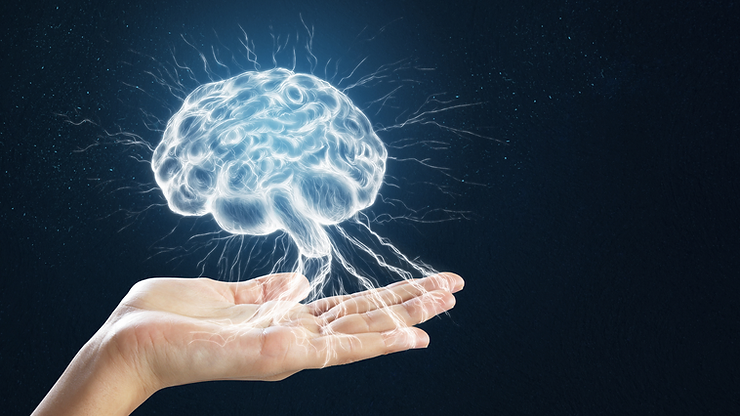What is Cerebral Amyloid Angiopathy? - Domenico Pratico, MD, FCPP
- September 5, 2023
Cerebral Amyloid Angiopathy (CAA) might not be a term that rolls off the tongue easily, but its impact on brain health is far from subtle. Cerebral Amyloid Angiopathy (CAA) is a condition characterized by the progressive accumulation of amyloid-beta proteins, the same material that forms the amyloid plaques in Alzheimer’s disease, in the wall of the brain blood vessels.

Understanding the Mechanics
At the core of CAA is the progressive accumulation of amyloid-beta proteins within the walls of brain blood vessels. As time goes on, this buildup interferes with the normal functioning and survival of the cells that make up these vessels. Consequently, these cells can succumb to damage, setting off a chain reaction. The compromised vessels become prone to leakage, resulting in bleeding, which in turn can trigger a hemorrhagic stroke.
The Clinical Picture
While CAA often doesn’t display noticeable symptoms, it can lead to various neurological complications. These include dementia, transient neurological events like transient ischemic attacks (TIA), and most significantly, intracranial hemorrhage (ICH). Among these, ICH stands out as the most frequent result of CAA, highlighting the potential seriousness of the condition.
Subtypes of CAA
CAA presents itself in two main forms: hereditary and sporadic. The hereditary type arises due to a genetic mutation present in a patient’s DNA, an underlying genetic irregularity that acts as a trigger for the condition. On the other hand, the sporadic form doesn’t have a specific identifiable cause, adding to the complexity of understanding its origins.
Interestingly, sporadic CAA often coexists within the brains of individuals affected by Alzheimer’s disease (AD), a connection that is often underestimated. Astonishingly, research suggests that up to 80% of AD patients also have concurrent CAA. This interplay between the two conditions adds layers of complexity to the realm of neurological research.
Current Treatment
Unfortunately, when it comes to prevention and treatment, the field of CAA is still full of uncertainties. Despite significant progress in medical science, effective strategies for preventing or treating CAA remain elusive. This underscores the urgent need for further research and innovation in the field of neurological health.
If you like this blog post, I also wrote about – Is Alzheimer’s risk higher among women, African-Americans and Hispanics? – Domenico Pratico
Domenico Praticò, MD, is the Scott Richards North Star Charitable Foundation Chair for Alzheimer’s Research, Professor and Director of the Alzheimer’s Center at Temple, and Professor of Pharmacology at the Lewis Katz School of Medicine at Temple University
You can find out more information on Dr. Domenico Pratico’s research papers here.
Connect with Dr. Domenico Pratico on LinkedIn, Facebook, Twitter & Instagram
Follow Dr Domenico Pratico‘s lab website here: Pratico Lab
At the core of CAA is the progressive accumulation of amyloid-beta proteins within the walls of brain blood vessels. As time goes on, this buildup interferes with the normal functioning and survival of the cells that make up these vessels. Consequently, these cells can succumb to damage, setting off a chain reaction. The compromised vessels become prone to leakage, resulting in bleeding, which in turn can trigger a hemorrhagic stroke.
The Clinical Picture
While CAA often doesn’t display noticeable symptoms, it can lead to various neurological complications. These include dementia, transient neurological events like transient ischemic attacks (TIA), and most significantly, intracranial hemorrhage (ICH). Among these, ICH stands out as the most frequent result of CAA, highlighting the potential seriousness of the condition.
Subtypes of CAA
CAA presents itself in two main forms: hereditary and sporadic. The hereditary type arises due to a genetic mutation present in a patient’s DNA, an underlying genetic irregularity that acts as a trigger for the condition. On the other hand, the sporadic form doesn’t have a specific identifiable cause, adding to the complexity of understanding its origins.
Interestingly, sporadic CAA often coexists within the brains of individuals affected by Alzheimer’s disease (AD), a connection that is often underestimated. Astonishingly, research suggests that up to 80% of AD patients also have concurrent CAA. This interplay between the two conditions adds layers of complexity to the realm of neurological research.
Current Treatment
Unfortunately, when it comes to prevention and treatment, the field of CAA is still full of uncertainties. Despite significant progress in medical science, effective strategies for preventing or treating CAA remain elusive. This underscores the urgent need for further research and innovation in the field of neurological health.
If you like this blog post, I also wrote about – Is Alzheimer’s risk higher among women, African-Americans and Hispanics? – Domenico Pratico
Domenico Praticò, MD, is the Scott Richards North Star Charitable Foundation Chair for Alzheimer’s Research, Professor and Director of the Alzheimer’s Center at Temple, and Professor of Pharmacology at the Lewis Katz School of Medicine at Temple University
You can find out more information on Dr. Domenico Pratico’s research papers here.
Connect with Dr. Domenico Pratico on LinkedIn, Facebook, Twitter & Instagram
Follow Dr Domenico Pratico‘s lab website here: Pratico Lab
